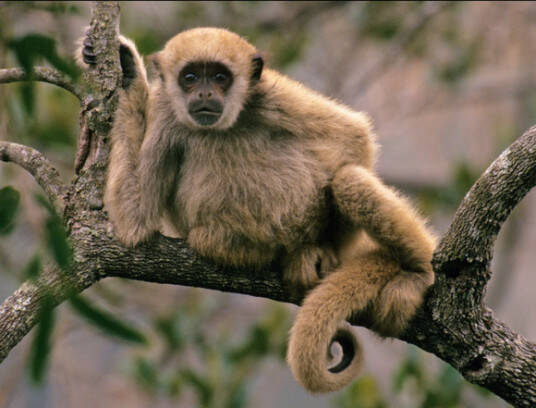northern muriqui
IUCN
LCBasic Information
Scientific classification
- name:northern muriqui
- Scientific Name:northern muriqui,Northern woolly spider monkey
- Outline:Primates
- Family:Theridiidae genus
Vital signs
- length:45-63cm
- Weight:No verification information
- lifetime:No verification information
Feature
The structure and appearance are between the woolly monkey and the spider monkey.
Distribution and Habitat
Distribution is restricted to the montane forests of southeastern Brazil.
Appearance
The structure and appearance are between the woolly monkey and the spider monkey. It has thick fur, a stout body, and a protruding abdomen, similar to the woolly monkey; it lacks a thumb and has very long limbs, similar to the spider monkey. It is 45 to 63 cm long, with a tail length of 65 to 80 cm, light yellow or brown, with a bare face and a curled tail. The northern woolly spider monkey can be distinguished individually by its natural markings and facial features (such as the color and pattern of the fur, the shape of the ears, the shape of the face, and the pigmentation). Usually about a week after birth, the sex can be determined based on the shape and position of the genitals.
Details
The northern muriqui is extremely rare and is one of the most endangered primates.

The northern muriqui mainly feeds on leaves and branches, but also eats fruit, often using its dangling tail to eat while hanging upside down. Female monkeys are more independent than male monkeys, and they leave the group they were born in at an average age of 6. Female monkeys can mate with multiple male monkeys. There is almost no interaction between male monkeys and infant monkeys. Only when the infant monkey actively calls the male monkey will the two sides have a brief exchange.
Listed in the 2019 ver 3.1 of the World Conservation Union Red List of Threatened Species (IUCN) - Critically Endangered (CR).
Listed in Appendix I, Appendix II and Appendix III of the Convention on International Trade in Endangered Species of Wild Fauna and Flora (CITES) 2019 version Appendix I.
Protect wild animals and stop eating game.
Maintaining ecological balance is everyone's responsibility!








